Started in July 2012, the Tokyo-based startup, Mamorio, Inc., developed a smart tracking tag and app to help people keep track of their belongings, as well as notify them when they’ve left something behind. While the idea of keeping tabs on our things is not a revolutionary concept, the innovative way in which the company provides its services, as well as their proactive approach to intellectual property (IP) protection and collaborations, play a big role in their growing success.
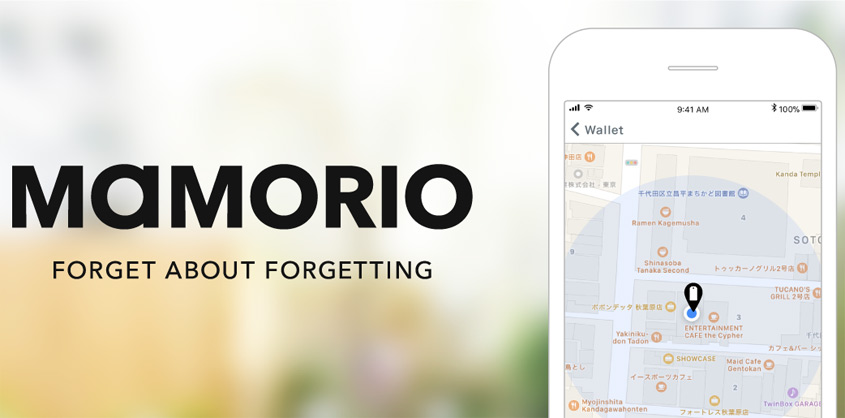
MAMORIO at a glance
- Innovative tracking tag allows you to find lost objects
- It can use the Internet of Things to crowd-source searches
- The tag can be used not only to track things, but also to keep an eye on pets, vulnerable people, etc.
- The firm uses patents, copyright, trademarks and more to protect their assets
Nobody enjoys losing their personal belongings. Whether it is a key, a wallet or a purse, the loss of personal possessions is an age-old problem that affects everyone at a certain point in life. In Japan a growing number of lost items are handed in to police stations, rail operators or department stores every year. In fact, in Tokyo alone, millions of lost items are recorded annually by the Metropolitan Police Department. While the most valuable property (cash or IDs) tends to be easier to reunite with its owners, the majority of items are never returned.
[L]ost property has always been handled by the police and while they will contact you if an item belonging to you is handed in to their station, they won’t go and search for your lost belongings. We wanted to provide services that would meet such needs.Mr. Daiki Masuki, CEO of Mamorio, Inc.
What once was lost…
The basic concept is that by linking a tag with a smartphone via the Bluetooth function, a user can receive push notifications when the tag is separated a certain distance from the smartphone and loses connection. The alert contains information such as the last-known time and location of separation.
For that to work, the firm needed to design a tracker and a smartphone app that works with the GPS function of a smartphone. Not only that, a branding strategy had to be developed in order to distinguish the company’s products from potential competitors, as well as encourage customer loyalty.
The most prominent feature of MAMORIO is its simple but sleek design in the shape of a common tag. The shape is easily recognizable by customers, which contributes to the company’s larger branding strategy. The tags were designed to be as small as possible, making them convenient to attach to a large array of items, such as key chains, or inserted into items such as wallets or suitcases. MAMORIO S, a thinner, lighter version (2.8 mm / 2.4 g) of the original MAMORIO (3.4 mm / 3 g), is able to fit in even tighter places. For a more personal touch, MAMORIO comes in several color options.
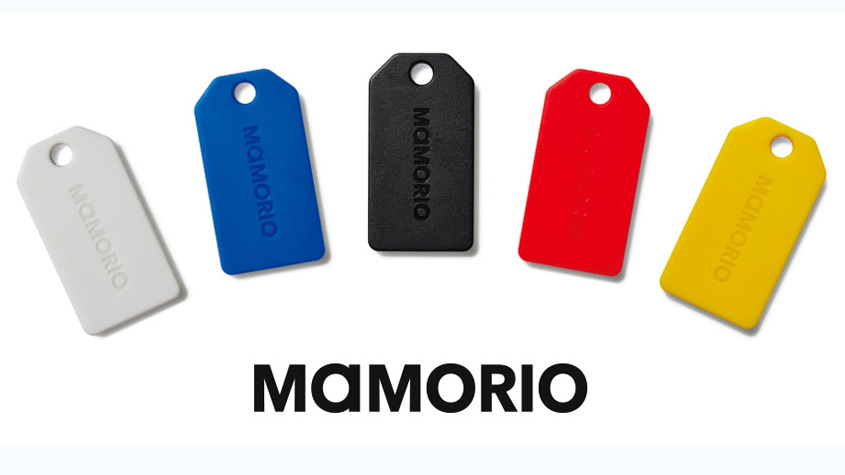
…is now found
The next important decision Mamorio, Inc. took was to upgrade the basic functionality of the tracker. In addition to the smartphone app notification feature, which is triggered when the tag and smartphone are separated by a certain distance, the company also released its patented “cloud tracking” system and the “MAMORIO Spot” system.
Cloud tracking
The cloud tracking “search together” function utilizes the Internet of Things (IoT) to offer mutual search alerts through which other MAMORIO users can pick up on the location of a lost tag (provided the cloud tracking function is turned on and that other users enter its tracking range) and automatically relay the information to the cloud. Once it’s reached the cloud, the original owner will receive a map displaying the item’s last known location. It is a smart and convenient way to crowdsource passive searching and its effectiveness increases proportionally as the number of users increases.
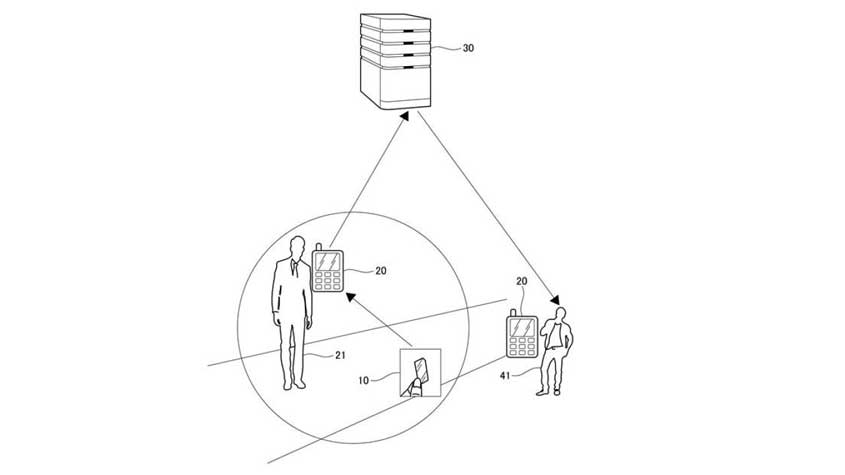
Spot tracking
The MAMORIO Spot utilizes a similar concept, but does not depend on other MAMORIO users to work. With this system, Mamorio, Inc. has obtained authorization to install antennas to receive signals from MAMORIO products in heavily-trafficked areas such as the lost and found centers of major train stations and large department stores. The fixed receivers are able to identify a tag attached to a lost item and send its positional data to the owner.
Unforgettable products
Thanks to such innovative features, MAMORIO found great success and was able to develop other products based on the same technology. One example is the company’s latest product MAMORIO FUDA. MAMORIO FUDA functions in the same way as the original MAMORIO, but instead of a tag, the seal-type device but can be easily stuck to any surface, making it ideal to attach to items such as laptops, guitars, IDs, etc.
Safety tracking for the elderly
Another increasingly popular product is the Me-MAMORIO, which is a tracker in the shape of a button with two points of attachment. It can be sewn to a jacket or a hat and allows users to track people wearing the articles more easily. The main target of users of Me-MAMORIO is the elderly, especially those with memory issues such as dementia.
The development of this product came from the partnership between Mamorio, Inc. and one of Japan’s leading pharmaceutical companies, Eisai Co., Ltd. The two firms wanted to create a tracking tool to support people with memory issues, who nevertheless want to continue to come and go freely while remaining safe.
With Me-MAMORIO, family members or care workers can also access information regarding the whereabouts of the tag, which also includes a free-of-charge medical care plan service in the event of an emergency. Such a device is increasingly necessary in Japan, where by the year 2025 over 30% of the population will be aged 65 and over.
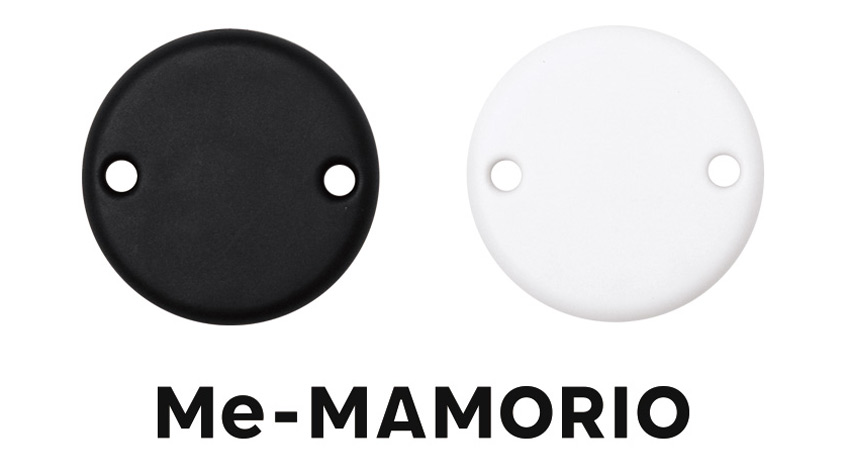
IP assets
Mamorio, Inc. recognized the importance of their unique tracking system and filed a patent for a “lost item discovery system” with the Japan Patent Office (JPO) in 2015, which was granted in 2016.
While the MAMORIO smartphone apps are automatically protected by copyright, with such success, Mamorio, Inc. also strives to protect its other growing intellectual property assets.
Mamorio, Inc. filed its first trademark application with the JPO in 2014 for their flagship brand “MAMORIO”. “MAMORIO” was registered as a standard character mark a few months later in 2015 (Registration No. 5752904), under Nice classes 9 (telecommunications equipment) and 42 (design, creation or maintenance of programs for electronic computers, performance and operation method etc. of machines requiring highly specialized knowledge).
The next increasingly popular brand Mamorio, Inc. sought to protect was “Me-MAMORIO”, for which they applied for the registration of another standard character mark with the JPO in 2016. “Me-MAMORIO” was registered the following year in 2017 (Registration No. 5922191), under Nice classes 9, 42 and 45 (personal and social services rendered by others to meet the needs of individuals).
In addition to patents, copyright and trademarks, Mamorio, Inc. also owns the domain name mamorio.jp where users can learn more about Mamorio, Inc., as well as their services, core values and team. Furthermore, the company also maintains an active presence on the popular social network Facebook (@mamorio.jp).
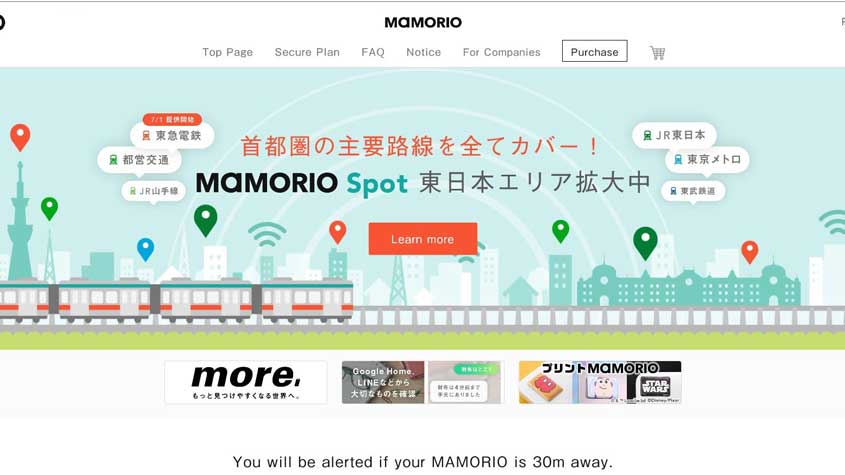
What’s next?
In addition to the broad number of products, the company has been able to develop several additional collaborations with other companies, such as Fanimal (aiming to identify lost pets); Gramas (providing specific wallets that are designed to accommodate MAMORIO products); TV Asahi (by exploring further research and development of the products); and Japan Airlines (for tracking the maintenance equipment of the carrier).
Due to the very nature of the technology of their products, Mamorio, Inc. has so far limited its activities to areas with a greater population density, such as Tokyo. However, they are now considering expanding into other parts of Japan.
I want our name to become the first thing that pops into people’s heads when they lose something.Daiki Masuki, CEO of Mamorio, Inc.
Source: WIPO

 Client Focus
Client Focus